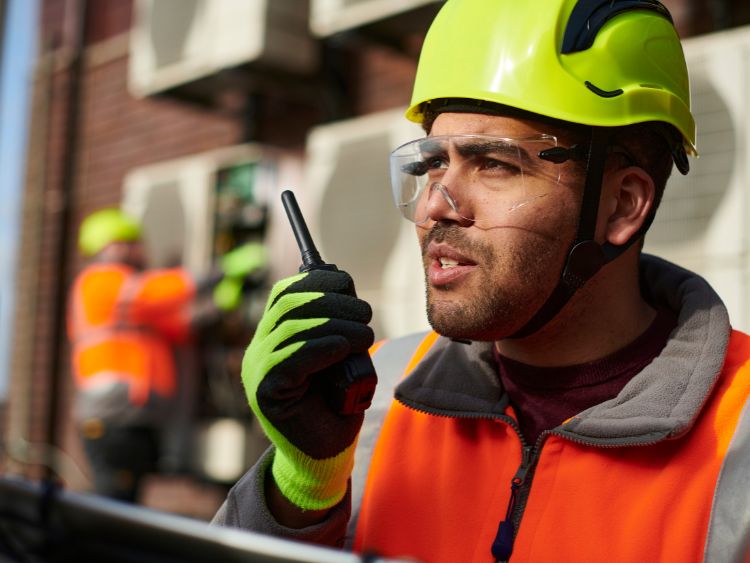Air conditioning is no mere luxury; in many climates, it’s a downright necessity. As temperatures soar and humidity clings like an unwelcome guest, a well-serviced aircon unit isn’t just about comfort—it’s about survival. But let’s face it, how many of us give our aircon the TLC it deserves? In this comprehensive guide, we’ll dive into the world of aircon servicing, ensuring that you’re well-equipped to keep your cool, no matter what the weather throws your way.
Picture this: It’s the peak of summer, the sun’s blazing down, and you’re dreaming of the cool embrace of your air-conditioned haven. But lo and behold, your aircon decides to take a vacation, leaving you in a sweltering mess. Frustrating, right? That’s where the magic of regular aircon servicing comes in. It’s not just about fixing what’s broken; it’s about preventing problems before they start. And that’s precisely what we’re going to explore.
Why Regular Aircon Servicing is a Game-Changer
- Longevity: Just like your car needs regular oil changes, your aircon needs consistent servicing to keep running smoothly.
- Efficiency: A well-maintained unit uses less energy, saving you money on your electric bill.
- Health: Regular cleaning reduces allergens and bacteria, making the air you breathe healthier.
- Comfort: Consistent performance means consistent comfort, no matter the weather.
The Nitty-Gritty of Aircon Servicing: What Does it Involve?
1. Cleaning and Replacing Air Filters
- How Often: At least every three months.
- Why It’s Crucial: Dirty filters restrict airflow and reduce efficiency. Clean filters mean cleaner air and lower energy costs.
2. Checking and Refilling Refrigerant Levels
- The Lowdown: Refrigerant is the lifeblood of your aircon. Too little, and your unit can’t cool effectively.
- Pro Tip: Never ignore refrigerant leaks; they’re bad for the environment and your wallet.
3. Inspecting and Cleaning Coils and Fins
- Evaporator and Condenser Coils: Dust and dirt impede their ability to absorb and release heat.
- Fins: Bent fins can block airflow. They need to be regularly checked and straightened.
4. Ensuring the Thermostat is on Point
- Why It Matters: A well-calibrated thermostat saves energy and keeps temperatures consistent.
When to Call in the Pros: Recognizing the Signs
- Strange Noises: Banging, whistling, or grinding sounds are red flags.
- Poor Performance: If it’s not cooling like it used to, something’s up.
- Odd Smells: Musty odors can indicate mold or mildew buildup.
DIY vs. Professional Aircon Servicing
Let’s be real; there’s only so much you can do on your own. For the heavy lifting, it’s always best to call in the experts. They’ve got the tools, the know-how, and the experience to keep your unit humming.
Preventive Measures: Keeping Your Aircon Happy
- Regular Checks: Keep an eye on your unit. Spotting issues early can save you a bundle.
- Clean Surroundings: Keep the area around your outdoor unit clear of debris.
- Smart Usage: Don’t overwork your unit. Using ceiling fans can reduce the load on your aircon.
Aircon Servicing and the Environment
Choosing eco-friendly servicing options not only benefits the planet but often results in greater efficiency and lower energy costs. It’s a win-win!
History of “Aircon Servicing”
Air conditioning, a technology that has revolutionized the way we live and work, has a history dating back to the early 20th century. Initially designed for industrial use, particularly in the printing and textile industries to control humidity and temperature, the technology soon spread to public spaces and homes.
Real-World Example: The first home air conditioning system was installed in 1914, and it was a luxury few could afford. It wasn’t until the post-World War II economic boom that aircon became a staple in homes and businesses, leading to the rise of aircon servicing as a necessary industry.
Step-by-Step Process of “Aircon Servicing”
- Inspection: A thorough examination of the aircon unit to identify any potential issues.
- Cleaning: Removing dirt, dust, and debris from filters, coils, and drains.
- Refrigerant Check: Ensuring the refrigerant level is optimal for efficient cooling.
- Component Assessment: Inspecting the thermostat, motor, and other components for wear and tear.
- Testing: Running the system to check for any issues in cooling efficiency.
Case Studies
Case Study 1: Residential Aircon Servicing
- Scenario: A family in a tropical climate noticed their energy bills rising and the aircon struggling to cool.
- Outcome: Regular servicing revealed a refrigerant leak, which once fixed, reduced energy consumption and improved efficiency.
Case Study 2: Commercial Aircon Maintenance
- Scenario: A large office building experienced inconsistent temperatures and high humidity.
- Outcome: Servicing identified clogged filters and failing compressors. Post-servicing, there was a marked improvement in air quality and temperature control.
Case Study 3: Neglected Aircon Unit
- Scenario: A decade-old aircon unit never serviced.
- Outcome: Eventually, the unit failed completely, leading to expensive replacement costs.
Benefits of “Aircon Servicing”
Socio-economic Benefits
- Job Creation: The need for skilled technicians stimulates employment.
- Energy Efficiency: Regular servicing ensures units use less power, reducing the economic burden on households and businesses.
Psychological and Community-Based Benefits
- Comfort and Productivity: A well-functioning aircon improves living and working conditions, boosting mood and productivity.
- Health Benefits: Reduces the risk of heat-related illnesses and improves air quality.
Impact on Socio-Economic Structure
- Real-World Example: In hot climates, efficient aircon systems enable businesses to operate year-round, supporting economic stability.
Challenges Faced
From the Perspective of “Aircon Servicing”
- Skill Gap: There’s a constant need for trained professionals.
- Technological Advancements: Keeping up with evolving aircon technologies can be challenging.
From the Host Country’s Perspective
- Energy Demand: Air conditioners significantly contribute to national energy consumption.
- Environmental Impact: Refrigerants used in aircons can be harmful to the environment.
Future Outlook
In the next decade, we can expect:
- Eco-Friendly Policies: Stricter regulations on refrigerants to minimize environmental impact.
- Technological Innovation: More energy-efficient and smart aircon systems.
- Increased Demand for Servicing: As aircon becomes more common, the demand for qualified servicing professionals will rise.
FAQs
Q: How often should I service my aircon? A: Ideally, twice a year, but at least once a year is a must.
Q: Can I do aircon servicing myself? A: Basic maintenance, yes. But for thorough servicing, it’s best to call in the professionals.
Q: What’s the average cost of aircon servicing? A: It varies, but preventative maintenance is always more cost-effective than major repairs.
Conclusion
There you have it—a deep dive into the world of aircon servicing. Remember, a little care goes a long way. Regular servicing not only ensures your comfort but also safeguards your health and your pocket. So, don’t wait for your aircon to throw a tantrum. Give it the attention it deserves, and enjoy a cooler, happier life. Stay chill, folks! Aircon servicing, while often overlooked, plays a crucial role in maintaining not only our comfort but also the efficiency and longevity of one of the most vital appliances in modern life. As we move forward, balancing technological advancements with environmental considerations will be key in shaping the future of this essential service.


